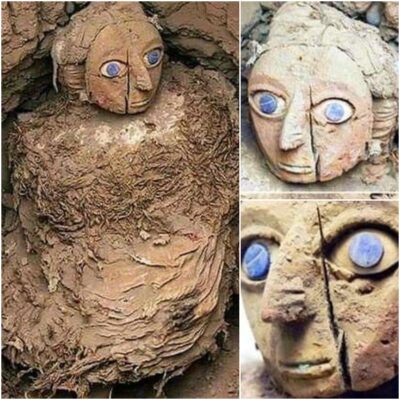The majority of people relate mummies to Egyptian culture and the sophisticated mummification techniques used to preserve bodies by bridging the gap between life and death.

The Ming Dynasty mummy was found in near perfect state, though researchers are unclear how she remained so well preserved. © Image Credit: beforeitsnews
While this process produces the majority of the mummies that have been found so far, there have been a few unusual cases where a body has mummified naturally rather than through intentional preservation.
The exceptionally well-preserved remains of a woman from the Ming Dynasty, dating back 700 years, were found by Chinese road workers in 2011. This discovery both clarified the way of living during the Ming Dynasty and raised many fascinating issues. Who is this woman? And how did she survive so well over the centuries?
The discovery of the Chinese mummy caught everyone off guard. In Taizhou, Jiangsu Province, Eastern China, road workers were clearing the terrain in preparation for a road expansion. The dirt has to be dug out for several feet during this operation. They came across a large, solid object when they were digging around six feet below the surface.

They instantly thought it might be a significant discovery and enlisted a group of archaeologists from the Taizhou Museum to assist them in excavating the site. They quickly realized it was a tomb and found a three-layered casket within. Layers of silk and linen covered in a murky liquid were discovered when the archaeologists opened the main coffin.

When they peered beneath the linens, they found a woman’s body that was remarkably well preserved. Her attire, jewelry, complexion, hair, and overall physical appearance were all remarkably undamaged. For instance, her brows and eyelashes were still wonderfully intact.
The precise age of the body cannot yet be determined by researchers. The lady is believed to have lived during the Ming Dynasty, between 1368 and 1644. If the woman’s body originated at the start of the Dynasty, it might be 700 years old.
The woman was decked out in traditional Ming Dynasty attire and jewels, including a stunning green ring. She was covered in fine silks and adorned with jewelry, suggesting that she was a high-ranking civilian.

A worker from the Taizhou Museum cleans the Chinese wet mummy’s large jade ring on March 3, 2011. Jade was associated with longevity in ancient China. But in this case, the jade ring was probably a sign of her wealth instead of a sign of any concern about the afterlife. © Image Credit: Photograph by Gu Xiangzhong, Xinhua/Corbis
The casket contained other bones, pottery, antiquities, and old documents. The brown liquid found within the coffin was either intentionally used to preserve the dead or it was just groundwater that had seeped into the coffin, according to the archaeologists who discovered it.

The woman was found lying in a brown liquid which is thought to have preserved the body, although researchers think this may have been accidental. © Image Credit: beforeitsnews
Some academics, however, contend that the burial location is what preserved the remains. If the temperature and oxygen levels are precisely right, bacteria cannot thrive in water, then decomposition can be slowed or prevented.
This discovery offers academics a close-up look at Ming Dynasty customs. They can see some of the antiquities that were used at the time, as well as the clothing and jewelry that people wore at the time. Many inquiries about the people’s way of life, customs, and regular activities during that time period can be answered with this.
The finding has given rise to a number of brand-new questions regarding the circumstances that enabled her body’s exceptional preservation for so long. There are questions about this woman’s identity, her place in society, how she passed away, and whether any of her preservation was done on purpose.
Since it may be impossible to provide such answers with only one set of bones, many of these questions may never be resolved due to the discovery’s secrecy. These and other questions about this woman—the unintentional mummy—might be answered if similar discoveries are made in the future.











